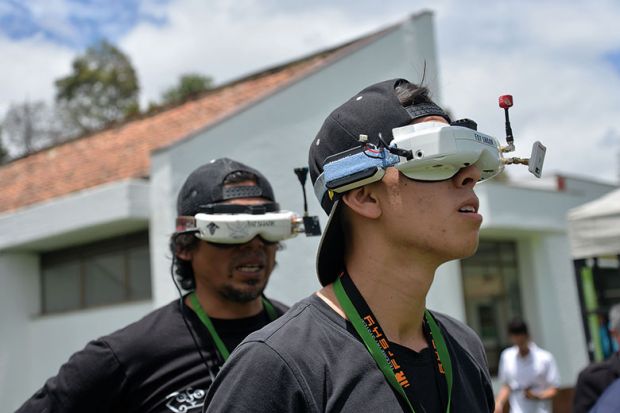Using virtual reality (VR) in the classroom to show the devastation caused by climate change causes students to show greater interest in the environment and to become more eco-friendly, according to a new paper.
With few studies conducted on how virtual reality technology influences environmental learning, US researchers investigated if envisioning a climatologically changed future ecosystem altered students’ perception of their place in the world.
The team at Paul Smith’s College Visitor Interpretive Center (VIC) developed a virtual, experiential education programme to model warmer climate scenarios using state-of-the-art video game technology.
Visitors to the centre in the Adirondacks in north-eastern New York state were asked to walk outside along a forest trail twice – once physically outside, and a second time using VR technology that displayed a range of future ecological changes to the area, such as altered plant and animal species.
The VR version of the forest trail was designed using the Unreal Engine 4, a computer graphic engine used in many popular video games such as Fortnite.
Campus resource: AI or VR? Matching emerging tech to real-world learning
The findings, published in The Adirondack Journal of Environmental Studies, reveal that participation in the VR simulation significantly increased respondents’ overall sense of place, while also having the effect of developing both increased knowledge and appreciation for climate change science.
The report says a sense of place involves how people make connections and develop opinions about matters that& affect a specific location.
From focus groups, the researchers found that the VR technology gave participants a better understanding of how much impact slight changes in temperature could have on their environment.
And they learned that students appreciated the pedagogical mode more when compared with more formal and traditional lessons that they had received in prior climate change education experiences.
The research team – of student Stephanie Tyski and professor Joe Henderson – says pedagogical experiences that leverage VR technologies can help environmental and climate change educators communicate the future changes that are expected as ecosystems adapt to warmer climate conditions.
Findings show that programmes such as this could help “open new doors” by allowing students to see places they would otherwise not be able to visit.
“These future virtual field trips could also create more opportunities for students to build a stronger understanding of lesson material by allowing them to revisit destinations to learn more, answer questions they may have, or simply be able to experience the program again,” the study concludes.
“VR is no longer a novelty in the realm of experiential education and now, more than ever, is presenting itself as one additional way forward for teaching about climate change and the environment.”
Participants were found to show an increased interest in and appreciation for climate change science, and were more motivated to adopt environment- and climate-friendly habits.





